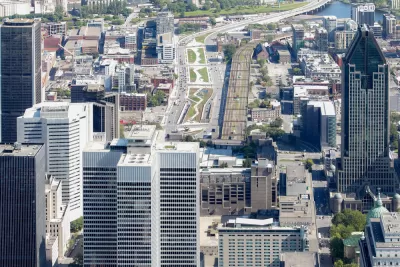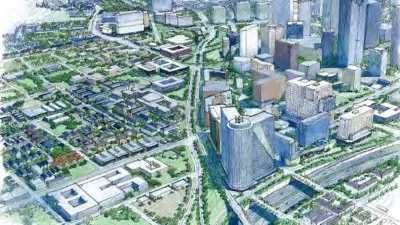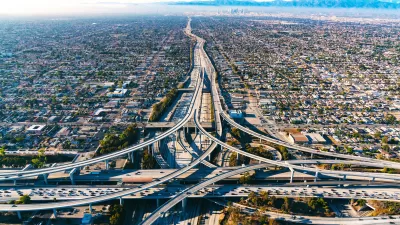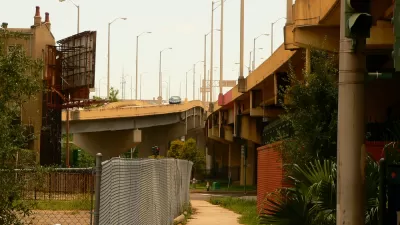Cities across the country are reevaluating the impacts of major highway on neighborhoods and looking for ways to revitalize and reconnect communities.

In a piece rich with visual aids and aerial photos that illustrate how cities looked before highways, New York Times writers Nadja Popovich, Josh Williams and Denise Lu ask "can removing highways fix American cities?"
Until recently, "[f]ederal and state funds have historically gone to building highways, not removing them." Transportation Secretary Pete Buttigieg has acknowledged the unequal legacy of highway projects, saying that "there is racism physically built into some of our highways." To address this, President Biden's infrastructure plan proposes "$20 billion to help reconnect neighborhoods divided by highways."
San Francisco's Embarcadero Freeway provides one of the country's oldest examples of successful highway removal. When the freeway was "irreparably damaged" by the 1989 Loma Prieta earthquake, the area was redeveloped into what is now a bustling pedestrian-friendly waterfront. "[I]n 2013, the city of Rochester, in upstate New York, won a nearly $18 million grant from the Obama administration that allowed it to take out an eastern segment of its sunken Inner Loop freeway, known locally as 'the moat.'" Since then, the area has experienced a transformation that includes new housing, bike lanes, and roads that connect more of the neighborhood to make walking more convenient.
"In recent years, more cities have started to seriously rethink some of their highways. The Congress for New Urbanism, a group that tracks highway removals, counted 33 proposed projects in 28 American cities." While plans for highway removal "could make life better for local residents as well as the planet," the proposals could also lead to displacement of vulnerable communities. "We need to figure out how to change without displacing people," says Dr. Garrick of the University of Connecticut. "The proposed Democratic legislation hopes to avoid that paradox. The bill would fund community outreach and engagement by local groups. And it prioritizes capital construction grants for projects that include measures like land trusts that would ensure the availability of affordable housing for local residents. "
FULL STORY: Can Removing Highways Fix America’s Cities?

Maui's Vacation Rental Debate Turns Ugly
Verbal attacks, misinformation campaigns and fistfights plague a high-stakes debate to convert thousands of vacation rentals into long-term housing.

Planetizen Federal Action Tracker
A weekly monitor of how Trump’s orders and actions are impacting planners and planning in America.

In Urban Planning, AI Prompting Could be the New Design Thinking
Creativity has long been key to great urban design. What if we see AI as our new creative partner?

Pedestrian Deaths Drop, Remain Twice as High as in 2009
Fatalities declined by 4 percent in 2024, but the U.S. is still nowhere close to ‘Vision Zero.’

King County Supportive Housing Program Offers Hope for Unhoused Residents
The county is taking a ‘Housing First’ approach that prioritizes getting people into housing, then offering wraparound supportive services.

Researchers Use AI to Get Clearer Picture of US Housing
Analysts are using artificial intelligence to supercharge their research by allowing them to comb through data faster. Though these AI tools can be error prone, they save time and housing researchers are optimistic about the future.
Urban Design for Planners 1: Software Tools
This six-course series explores essential urban design concepts using open source software and equips planners with the tools they need to participate fully in the urban design process.
Planning for Universal Design
Learn the tools for implementing Universal Design in planning regulations.
planning NEXT
Appalachian Highlands Housing Partners
Mpact (founded as Rail~Volution)
City of Camden Redevelopment Agency
City of Astoria
City of Portland
City of Laramie





























